Deep Penumbral Eclipse of the Moon 2017
Introduction | Photos with Sony RX 100 M1 | Photos with Leica M (Typ 240) - With Clouds | Photos with Leica M (Typ 240) - Moon only | References
Introduction
Below you find free-hand photos of a deep penumbral lunar eclipse that I took on February 11, 2017 with a Sony RX100 M1 and a Leica M (Typ 240; with Leitz Tele-Elmarit-M 90mm f/2.8 lens).
The photos were taken at 1:40 in the night, so just before the mid of the lunar eclipse. I woke up by chance because my bladder was squeezing ... At first the sky was cloudy, at the end of the shooting the moon was free from clouds.
The Sony photos were taken with program automatic and EV -2. The first set of Leica photos, where the moon shines through clouds, were also exposed automatically and underexposed (aperture priority, EV -3). However, since the moon was too bright, I switched to manual exposure for the remainder of the Leica photos. The photos presented here are sections taken from the original photos.
Data for the Deep Penumbral Lunar Eclipse
I collected the following data about the deep penumbral lunar eclipse on the 11th February, 2017 from Mondfinsternis.net:
- Entry in half-shade (1st contact): 23:34 o'clock
- Begin of visibility: ca. 00:30 o'clock
- Mid of lunar eclipse: 01:45 o'clock
- End of visibility: ca. 03:00 o'clock
- Exit from half-shade (2nd contact): 03:53 o'clock
Photos with Sony RX 100 M1
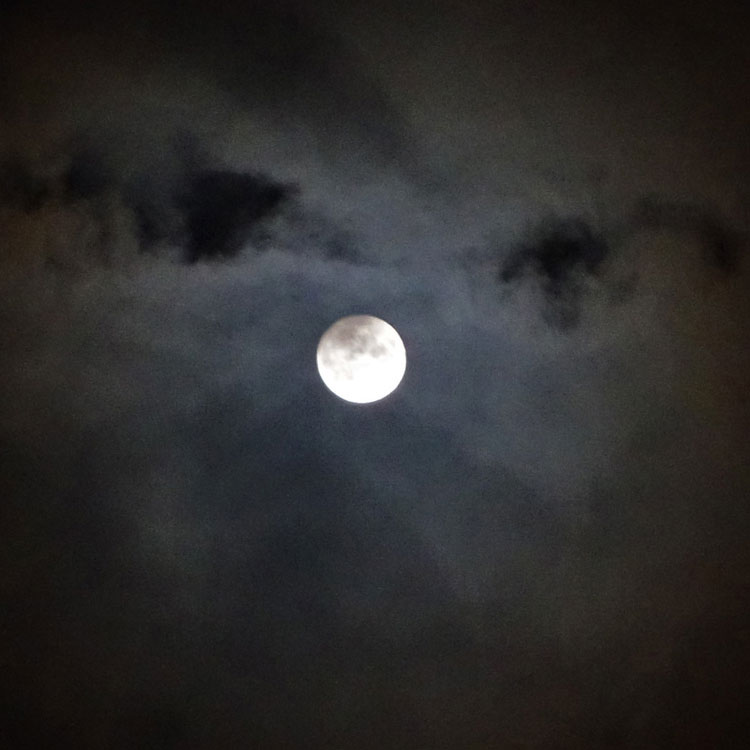 |
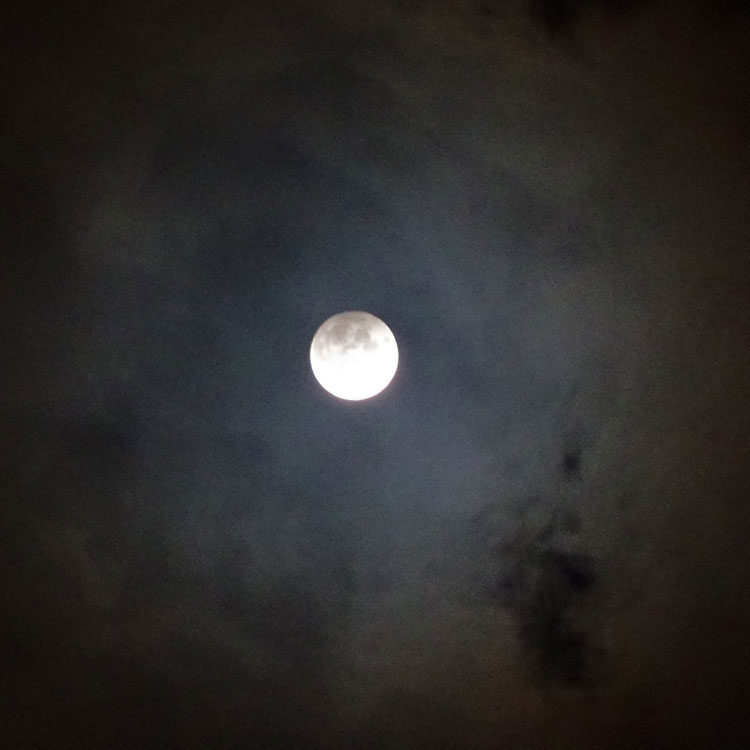 |
|
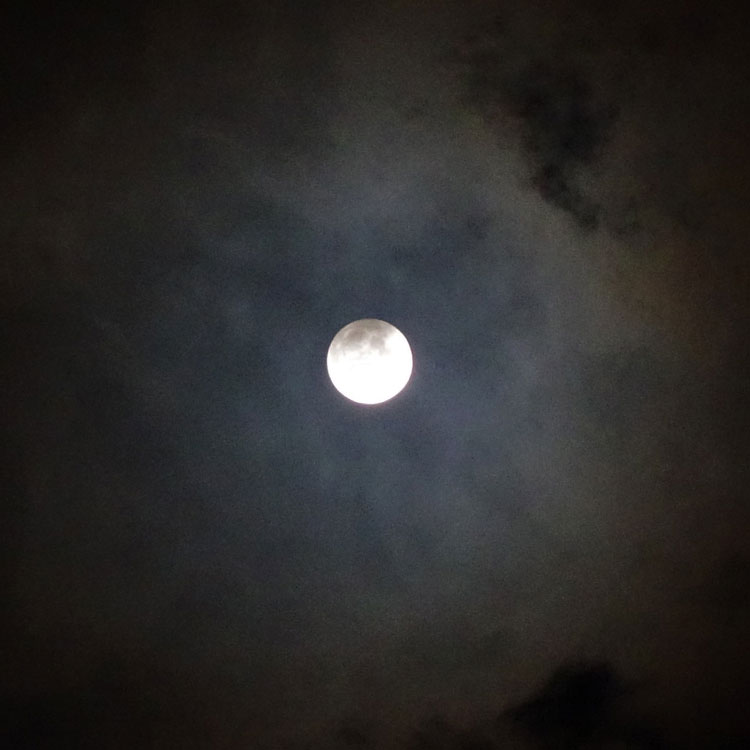 |
 |
Taken with program automatic, ISO 1600 und EV -2; electronic zoom used. The photo at the bottom right is an example for outshone photos (having identical exposure as the photo above it).
Photos with Leica M (Typ 240) - With Clouds
 |
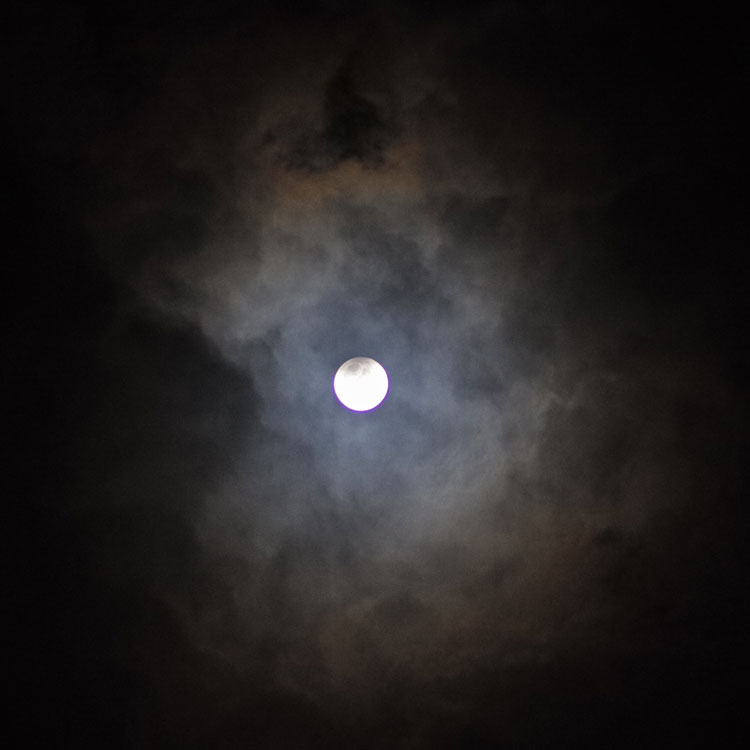 |
Taken with aperture priority, ISO 1600 and EV -3 (90 mm lens used). In both cases (and many more) the moon surface is more outshone as for the Sony photos.
Photos with Leica M (Typ 240) - Moon only
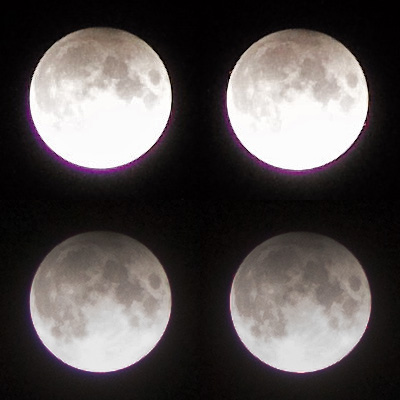 |
These photos were taken with manual exposure (exposure correction was apparently still switched on ...); ISO 1600, 90 mm lens The top row shows edited JPG versions, the bottom row shows JPG photos, which I developed from the corresponding DNG versions. In principle, it was somewhat "arbitrary" for me how to emphasize the earth's shadow - and in hindsight I did not know any more, how it had looked originally. In any case, the upper row demonstrates that the non-shaded part of the moon was very bright. |
References
- Wenn der Mond Trauer trägt - Halbschattenfinsternis am 11.02.2017 (Mondfinsternis.net): www.mondfinsternis.net/mofi2017h (in German)
- 11. Februar 2017: Halbschatten-Mondfinsternis (Wolfgang Dzieran, Astroblog Bad Lippspringe): astroblog-lippspringe.blogspot.de/2017/02/11-februar-2017-halbschatten.html (in German, shows a photo)
- Friday Night's Deep Penumbral Lunar Eclipse (Sky and Telescope): www.skyandtelescope.com/press-releases/friday-nights-deep-penumbral-lunar-eclipse
| 17.01.2018 |